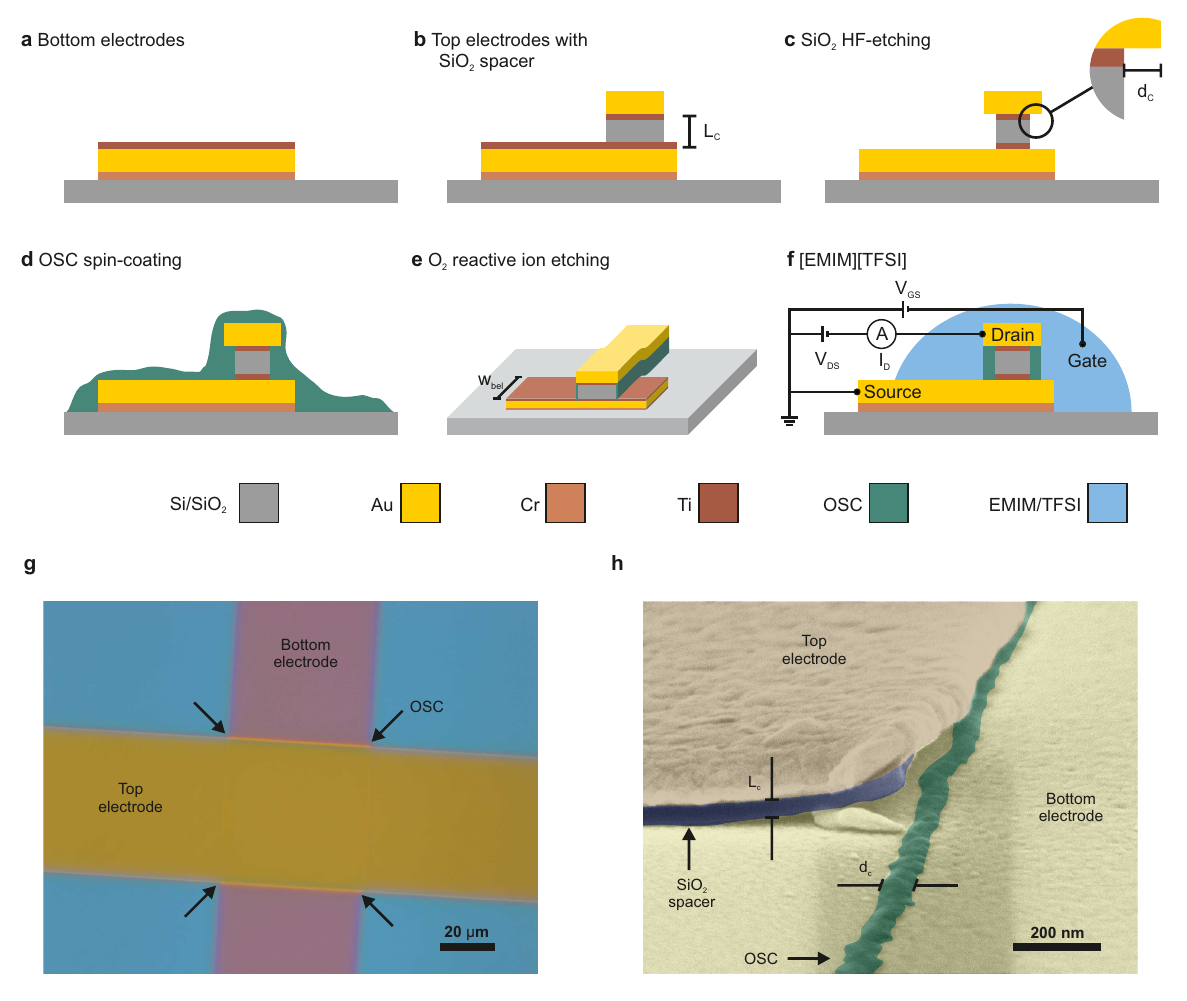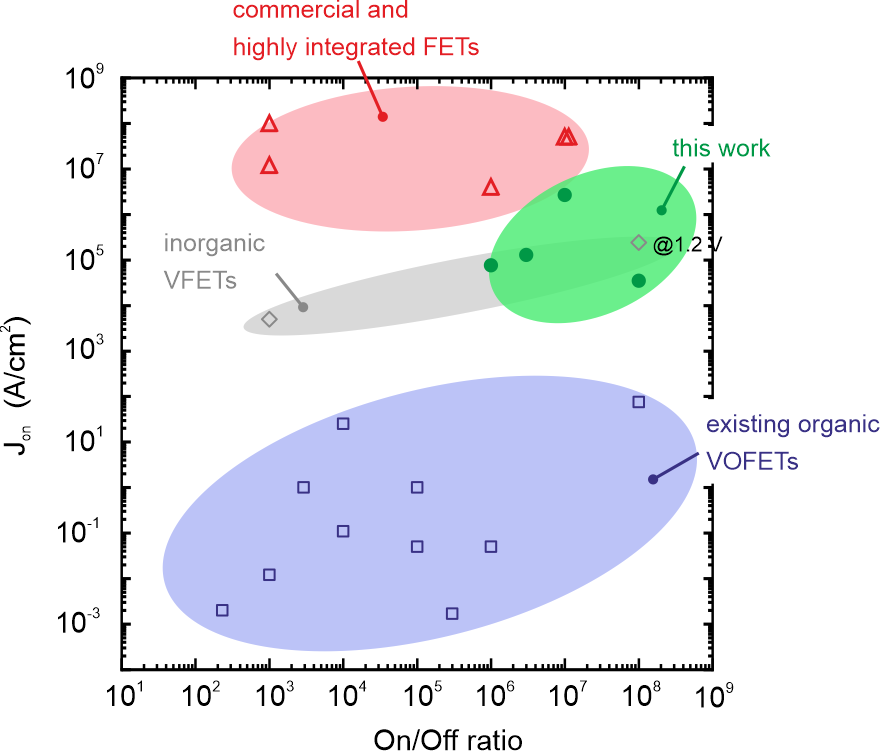Vertical Electrolyte-gated Organic Transistors
Commercially available field-effect transistors (FET) are in general rigid and expensive to produce. Therefore their use in e.g. flexible electronics, such as displays and sensors, is limited. Organic semiconductors on the other hand are promising components for these kind of novel flexible electronics.
Challenge
Attributes that do not usually come to mind when discussing organic materials, are high current densities in the MA cm-2 region, large transconductances in the 5000 S m-1 range, low-power operation or low supply voltages in the sub-volt regime. Values of this magnitude have so far been reserved for highly integrated nanoscale transistors. Organic transistors can currently only operate at current densities of tens of kA cm-2. Although such high current densities in the MA cm-2 range are crucial for realizing highly integrated, high-performance electronics, low-power operation is critical for operation in hand-held devices or in neural networks.
Our solution
The described patent application presents a novel nanoscopic device design based on a vertical transistor structure that enables electrolyte-gated organic semiconductors to drive MA cm-2 currents combined with on/off ratios of 108. In the present approach, a vertical organic field effect transistor (VOFET) design with a channel length of only 40 nm and a footprint of 2 x 80 x 80 nm2 is used to realize high electric performance with organic polymers when using electrolyte gating. The small channel length and footprint in principle allow the use of such devices in highly integrated circuits. Combining the high on-state currents with such large on/off ratios, the presented organic transistors are prime candidates for use in artificial neural networks, where they could operate as memristive devices with sub-100 fJ energy usage.

Fig. 1: Device fabrication process of electrolyte gated VOFETs: Patterning of the bottom (a) and top (b) electrodes by electron-beam lithography. (c) HF under-etching of the top electrode. (d),(e) Spin-coating of the organic semiconductor solution (OSC) and subsequent directional oxygen reactive ion etching. (f) fully finished transistor with electrolyte gate. (g) Polarization microscopy image of a finished VOFET without electrolyte gate. (h) Coloured cross-sectional SEM image of a VOFET with two gold electrodes (yellow), SiO2 spacer (blue) and OSC (green). Reprinted (adapted) with permission from Lenz et al., Nature Nanotechnology 14 (2019) 579 - 585. Copyright 2019 Springer Nature.
Advantages
The idea presented in this patent application closes the gap between existing organic VOFETs and established, commercially available FETs. The described novel VOFETs combine the ability for low-voltage operation (down to 10 µV) with a small footprint (2 x 80 x 80 nm2), large on/off ratios (108), high switching speed (1.2 MHz), long-term stability of the electrical performance and the use of electrolyte gating. The compact design and flexibility provided by the utilized organic materials allows for integrations in flexible electronics like displays and sensors. Additionally. the measured switching energies are already below what is currently used in CMOS neuromorphic devices, and only one magnitude larger than the 10 fJ per event used in the brain.

Fig. 2: Closing the gap between existing organic VOFETs and commercial FETs: Comparison of on-state current densities and on/off ratios for different vertical and planar transistors. Work within the scope of this patent application is shown in green. Reprinted (adapted) with permission from Lenz et al., Nature Nanotechnology 14 (2019) 579 - 585. Copyright 2019 Springer Nature.
Applications
The presented organic transistors can be utilized in e.g.
- Applications where low-voltages, high on-state current densities or large transconductances are required: e.g. driving of OLEDs, sensors or memristors
- Flexible displays like AMOLEDs and ultra-low power electronics as required for e.g. memristive devices in artificial neural networks
Development status
The manufacturing process has been successfully developed. The functionality of the transistors has been approved.
Patent status
International patent: WO2020120133A1
US patent application: US20220115609A1
Patent holder: Georg-August-University Göttingen public law foundation
References
Nature publication: Lenz et al.: Vertical, electrolyte-gates organic transistors show continuous operation in the MA-2 regime and artificial synaptic behaviour. Nature Nanotechnology 14, 579–585 (2019).
Contact
Dr. Mirza Mackovic
Patent Manager Technology
E-Mail: mmackovic(at)sciencebridge.de
Tel.: +49 (0) 551 30 724 153
Referenz: CPA-2317-SUG
www.sciencebridge.de
Tags: Nanotechnology
